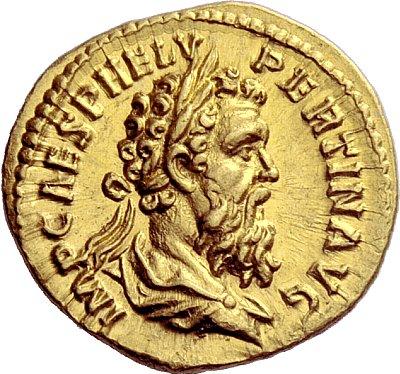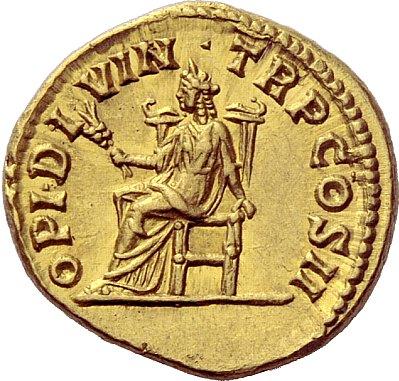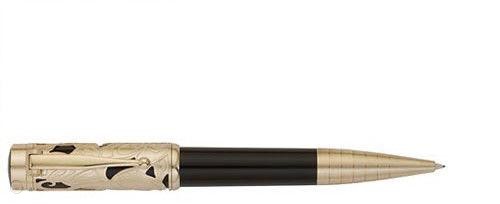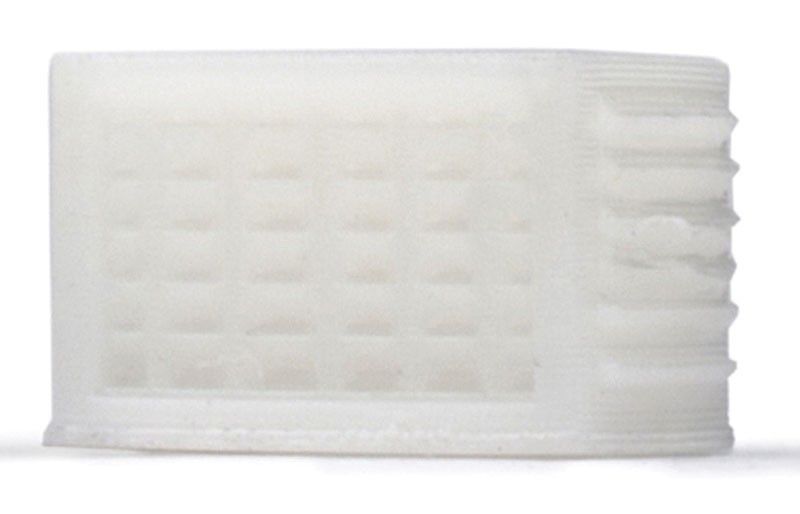Additional References: Cohen 32 var. (laureate only). BMC 18 note. Kent-Hirmer pl. 107, 368. Calicó 2386.
Notes: Laureate and draped bust right / Ops seated left, holding two corn ears.
Obverse: Pertinax (Latin: Publius Helvius Pertinax Augustus; 1 August 126 ? 28 March 193) was Roman Emperor for the first three months of 193. Successor to the assassinated Commodus, he was the first to serve as emperor during the tumultuous Year of the Five Emperors.
Born the son of a freed slave, Pertinax originally worked as a teacher before becoming an officer in the army. He fought in the war with the Parthians during the 160s, and success there led to higher-ranking positions in both the military and political spheres, including provincial governor and urban prefect. He was also a member of the Roman Senate, where he was a contemporary of the historian Cassius Dio.
Following the death of Commodus, Pertinax was acclaimed emperor. He attempted to institute several reform measures, although the short length of his time as emperor prevented the success of those attempts. One of those reforms, the restoration of discipline among the Praetorian Guards, led to conflict that eventually culminated in Pertinax's murder by the Guard. After his death, the Praetorians auctioned off the imperial title, which was won by the wealthy senator Didius Julianus, whose reign would last sixty-six days.
Pertinax would be deified by the successor of Julianus, Septimius Severus. His historical reputation has largely been a positive one, following the assessment of Dio.
From Wikipedia
Born the son of a freed slave, Pertinax originally worked as a teacher before becoming an officer in the army. He fought in the war with the Parthians during the 160s, and success there led to higher-ranking positions in both the military and political spheres, including provincial governor and urban prefect. He was also a member of the Roman Senate, where he was a contemporary of the historian Cassius Dio.
Following the death of Commodus, Pertinax was acclaimed emperor. He attempted to institute several reform measures, although the short length of his time as emperor prevented the success of those attempts. One of those reforms, the restoration of discipline among the Praetorian Guards, led to conflict that eventually culminated in Pertinax's murder by the Guard. After his death, the Praetorians auctioned off the imperial title, which was won by the wealthy senator Didius Julianus, whose reign would last sixty-six days.
Pertinax would be deified by the successor of Julianus, Septimius Severus. His historical reputation has largely been a positive one, following the assessment of Dio.
From Wikipedia
Denomination: The aureus (pl. aurei - "golden") was a gold coin of ancient Rome valued at 25 silver denarii. The aureus was regularly issued from the 1st century BC to the beginning of the 4th century AD, when it was replaced by the solidus. The aureus was about the same size as the denarius, but heavier due to the higher density of gold (as opposed to that of silver.)
Before the time of Julius Caesar the aureus was struck very infrequently, usually to make large payments from captured booty. Caesar struck the coin more frequently and standardized the weight at 1/40 of a Roman pound (about 8 grams). Augustus (r. 29 BC - 9 AD) tariffed the value of the sestertius as 1/100 of an aureus. The mass of the aureus was decreased to 1/45 of a pound (7.3 g) during the reign of Nero (r. 54 - 68).
After the reign of Marcus Aurelius (r. 161 - 180) the production of aurei decreased, and the weight was further decreased to 1/50 of a pound (6.5 g). During the 3rd century, gold pieces were introduced in a variety of fractions and multiples, making it hard to determine the intended denomination of a gold coin.
From Wikiepedia
Before the time of Julius Caesar the aureus was struck very infrequently, usually to make large payments from captured booty. Caesar struck the coin more frequently and standardized the weight at 1/40 of a Roman pound (about 8 grams). Augustus (r. 29 BC - 9 AD) tariffed the value of the sestertius as 1/100 of an aureus. The mass of the aureus was decreased to 1/45 of a pound (7.3 g) during the reign of Nero (r. 54 - 68).
After the reign of Marcus Aurelius (r. 161 - 180) the production of aurei decreased, and the weight was further decreased to 1/50 of a pound (6.5 g). During the 3rd century, gold pieces were introduced in a variety of fractions and multiples, making it hard to determine the intended denomination of a gold coin.
From Wikiepedia
Period: Imperial Rome. As the Roman Republic began to implode because of
corruption and infighting among powerful members of the Roman Senate, a new type of
Roman Republican coinage emerges, that of the military strongmen who dominated and
fought among each other before the final fall of the Republic. The drama surrounding
the fall of the Roman Republic is a story full of political intrigue, military action, betrayal,
murder and sex scandals. Different parts of this story have been told and retold by
ancient historians, modern day scholars, dozens of Hollywood movies and even an HBO
miniseries. All of the actors in this great drama, Crassus, Pompey, Julius Caesar, Brutus
and Cassius, Mark Antony and Cleopatra and the last man standing at the end of it all,
Octavian (later known as the first emperor of Rome, Emperor Augustus) all minted coins
during this time bearing their names and propaganda images supporting their factions
and political ideals.
Culture: Ancient Rome. A famous catch phrase "Rome was not built in a day"
definitely applies to the Roman civilization. Rome stated as a series of small villages among the
famous seven hills of Rome along the river Tiber. Eventually through conquest, diplomacy, wise
policies of indirect rule and assimilation, the Romans were able to not only unify the Italian
peninsula, but though a series of brutal wars against regional powers established a great Empire
that spanned Europe, Asia and Africa, making the Mediterrean Sea and "Roman Lake."
All Roman coinage can generally be divided into eight time periods as described below. An interesting thing about Roman coins minted during these eight time periods is that you can literally see the "Rise and Fall" of the Roman Empire on its coinage as the sharp imagery and pure silver and gold coins of the Roman Republic and Early Imperial Period gradually devolves into crude, illegible and heavily debased coins of the "Barracks Emperors" and "Barbarian" Period.
All Roman coinage can generally be divided into eight time periods as described below. An interesting thing about Roman coins minted during these eight time periods is that you can literally see the "Rise and Fall" of the Roman Empire on its coinage as the sharp imagery and pure silver and gold coins of the Roman Republic and Early Imperial Period gradually devolves into crude, illegible and heavily debased coins of the "Barracks Emperors" and "Barbarian" Period.
Item created by: gdm on 2016-08-14 17:05:34
If you see errors or missing data in this entry, please feel free to log in and edit it. Anyone with a Gmail account can log in instantly.
If you see errors or missing data in this entry, please feel free to log in and edit it. Anyone with a Gmail account can log in instantly.








